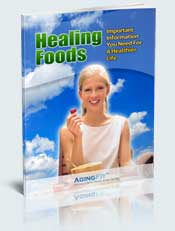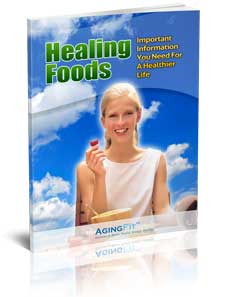» Anti-Aging
» Bones Joints & Muscle Health
- 5 Proven Remedies for Plantar Fasciitis
- Chair Yoga for Seniors: Keys to Maintaining Flexibility
- Restless Leg Syndrome Causing You Pain & Lost Sleep? Learn What IS Known About RLS
- Must Know Lyme Disease Information - You Might Be Surprised To Find Out...
- How To Prevent Falls And Reduce Accidents As We Age
» Cardiovascular Health
» Chronic Pain Management
» Dental Health & Wellness
» Digestive Health Problems
» Health Care
» Mental Health
» Sexual Health
» Skin Care

Osteopenia vs. Osteoperosis – What You Need To Know For Better Bone Health
Many baby boomers have never heard of osteopenia. In fact, many women with osteopenia do not even know they have it until a bone is fractured. For these women, the next step down is osteoporosis, so this is a critical stage that can impact the rest of their lives.
Women can stop the bone loss now, or they can do nothing and end up with fragile bones that break easily and send them to bed or to a wheelchair.
| Rating | Recommended | Description | Review | ||
|---|---|---|---|---|---|
 |  | Ruby Calcium Osteoporsis Fighting Benefits
| Find Out More | ||
 |  | Hot Flash Formula Menopausal Benefits
| Find Out More | ||
 |  | Mendapause for Menopause Menopausal Benefits
| Find Out More |
WHAT is Osteopenia
Osteopenia is a condition of low bone density, which can be normal for some women in the aging process, but is a major issue for women who are genetically disposed to ostepenia or osteooporosis.
If bone density is not addressed, the bones of women with osteopenia continue to deteriorate into osteoporosis, or severe bone loss.
At that point, the bones are so fragile that a simple fall may result in a fractured hip. In fact, most people have heard about someone who fell down, broke a hip, and never recovered.
WHO is Most at Risk?
Since more than 18 million women have osteopenia, it should be a concern for all women. Many post-menopausal women have osteopenia because of lost estrogen. Other factors that can cause estrogen loss as well:
• Excessive alcohol use
• Lack of exercise
• Smoking
• Some asthma medications
A broken bone in a middle-age person can be a sign of osteopenia, or even osteoporosis. As the bone becomes less dense, the possibility of fracture increases. Once there is even just one fracture, it is a sign that you are at risk for more fractures.
The factors that cause women to develop osteopenia are actually the same as for osteoporosis.
Young athletic women often develop osteopenia because they have low body weight. Since estrogen levels are stored in body fat, athletic or very thin women have a greater chance of developing osteopenia and osteoporosis.
Some women athletes do not have a menstrual period, which throws off their estrogen levels and encourages osteopenia.
Women with lean, muscular bodies and no fat are at particularly at risk, especially the following athletes:
• Gymnasts
• Dancers
• Skaters
• Swimmers
• Runners
Runners often absorb less calcium than other women. That happens because they tend to avoid milk products when they are in training. Other risks that increase a woman’s potential for developing osteopenia are:
• Early menopause
• Genetic disposition to osteoporosis
• Anorexia nervosa
• Not consuming enough calcium
• Small, thin frame
HOW to Diagnose Osteopenia
A DEXA X-ray, or dual X-ray absorptionetry, is a test that can scan any bone in the body to diagnose bone density.
They say if a middle-aged or older woman has sustained a bone fracture, it is very possible that she may already have osteopenia or even osteoporosis.
There is just no way to know you have it unless you receive the X-ray. Another test that some doctors use, however, is the quantitative ultrasound, which measures the speed of sound against the bone.
WHEN Should Women Get a Bone Density Test?
Experts suggest all women over 65 should get one. They also recommend the test for women 60 years old who have certain risk factors. It is important to discuss this issue with your doctor to come up with a screening plan that is appropriate for you.
HOW to Prevent or Heal Osteopenia
The bottom line in preventing osteopenia is to maintain the densest bones possible. The denser they are, the stronger they are. Other factors that come into play include hormones, nutrition, some medications, and an acid diet.
These issues can cause thin or weak bones, but not all women with the same bone density share equal risk for fractures.
The important difference is lifestyle and diet. Women who exercise, watch their diet, and consume enough calcium, minerals, and vitamins will have stronger bones.
Another individual factor in preventing osteopenia or osteoporosis is vitamin D. In fact, Canada is so convinced of its importance that they say a diet with enough vitamin D and calcium, along with exercise, will result in strong bones and help prevent osteoporosis.
The U.S. does not yet make that claim with vitamin D, but it is something to keep in mind.
Vitamin D is available in very few foods, but it is found in fatty fish like sardines, tuna, mackerel, and herring. It is also added to many dairy products and juices. Most of what the body gets, however, is absorbed from sunlight.
Surprisingly, 6 days of sunlight can offset 49 days of no sunlight. Body fat stores vitamin D when there is sunlight, and releases it when the sun goes away.
People who are middle aged and older do not spend as much time in the sunshine as younger people. They also do not have as many receptors in their skin to convert sunlight to vitamin D. Their bodies also have more problems absorbing vitamin D, even when it is in their diet. Supplements do not convert well in older people because of their aging kidneys.
For people over 65, more than 40% do not have enough vitamin D in their system, even those who live in sunny southern climates.
To prevent osteopenia and osteoarthritis, all women should take vitamin D supplements along with a healthy diet and exercise, but particularly those who live in northern climates with little winter sun.
Foods with the proper nutrients include:
• Broccoli
• Cheese
• Yogurt
• Milk
OSTEOPENIA – Stopping Osteoperosis Early
Appropriate exercises can help keep osteopenia and osteoporosis at bay. These exercises should include activities such as:
• Swimming
• Walking
• Weights
• Running
• Tennis
For good bone health, women need to take charge of their own bodies as they age. It is never too late to start. The good news is that wherever you are in the bone density category, any change now will lead you down the path to good bone health and the prevention of osteopenia.
You May Also Find Informative:
Aging Fit - Health Research & Information
Better Health. Energy. Quality.






